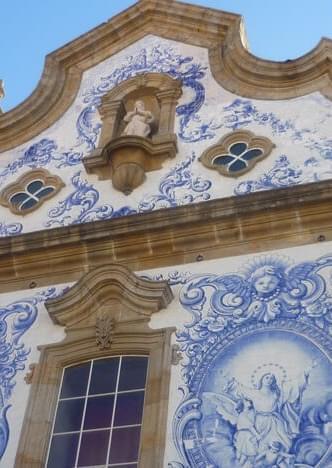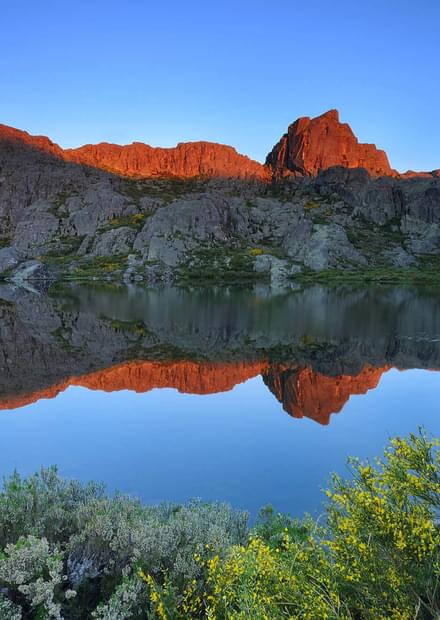Covilhã

Covilhã, Factory City
The mountain is the main attribute of the city, situated in Serra da Estrela up to the mountain between the river streams of Carpinteira and Goldra, which were so important to the wool industry. The University, restructured on the contemporary era, and the wool industry have shaped its social and historical profile, creating a strong imaginary. These are the cornerstones of the city.
The origin of wool production in Covilhã may have begun among the Jewish community, very numerous during the Middle Ages. Covilhã turns into the main wool production centre in the country thanks to the river streams Carpinteira and Goldra that supplied water for wool treatment, keeping the shepherd tradition alive. In 1681, D. Pedro II, Count of Ericeira, opens the Factory-School over Carpinteira river stream, the ancient Fábrica d’el Rei D. Sebastião, later called “Fábrica Velha”.
Under the reform carried out by Marquis de Pombal on the 18th century, the factory Real Fábrica de Panos da Covilhã was founded upon the stones of demolished medieval wall near Goldra river stream.
The first weaving machines Jeacquard were placed in 1683 in Covilhã; in 1884 the Campos Melo Industrial School is founded and in 1891 the arrival of the railway is celebrated, improving the wool industry and the tourism demand for tuberculosis treatments and mountain sports. In 1941 the Group of Education and Leisure of Campos Melo Industrial School was founded. It was a privileged meeting point for factory workers, but also a place of solidarity and sense of community.
The wool industry was the main activity of the local economy and the landscape became “industrialised”. Consequently, the city began to grow both inside and outside and many houses were rebuilt, turning Covilhã into a unique city in terms of urban evolution, like no other Portuguese city, preserving this identity until the 70’s of the 20th century.
Architectural icons
In the 21st century there is the need for a new look over the city, by recovering the architectural industrial heritage of the city and connecting Goldra and Carpinteira river streams through pedestrian bridges.
The extraordinary work of the architect João Luís Carrilho da Graça and the engineers António Adão da Fonseca and Carlos Quinaz – Carpinteira Pedestrian Bridge – was born out of this vision. This work was awarded in the 7th Iberian-American Biennale for Architecture and Urbanism as one of the best architectural works of Latin America, Portugal and Spain. It was also awarded by AIT Global Awards (2011) and it was considered a “World’s Coolest Design Destination” by American magazine Travel&Leisure. Carpinteira Bridge was also nominated for Mies van der Rohe Awards.
Covilhã offers its visitors many lifts so that can easily discover the whole city on foot. These lifts soon became an architectural attraction of the city, providing a new look over the singularity of both Covilhã and the fascinating surrounding natural region.
Street art capital
Long gone are the days when the walls of old houses or empty warehouses in Center of Portugal conveyed a sad grey. Artists from Portugal and the rest of the world have turned the region into a huge canvas. They have transformed the influences of nature and the life of local communities into unique high‐scale masterpieces. A big plus not only for the visitors who are fans of street art, but also for the inhabitants of these cities.
The epicentre of the street art movement is the city of Covilhã, located at the foothill of Serra da Estrela. Several street art motives were inspired by the glorious past of Covilhã, when the city was the centre of the Portuguese wool industry: sheep and looms, shepherds and wool dominate the art works in many house fronts. WOOL is the name of the 1st street art festival in Center of Portugal, organised every year since 2011 in Covilhã with the deep engagement of many local volunteers from the city. The driving force behind the festival is Lara Seixo Rodrigues, who was born in Covilhã and graduated in architecture in Lisbon. She soon became an internationally recognised and requested expert.
WOOL Festival honours the glorious past of Covilhã as one of the most important wool-producing cities in Portugal.
How to get to Covilhã
Articles about Covilhã

Eating in Covilhã

Architectural icons

Wool Fest – Covilhã Art Festival



































